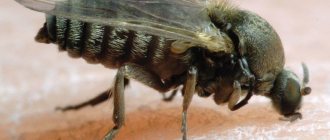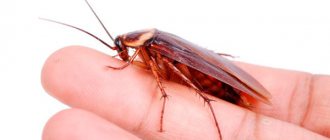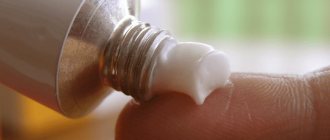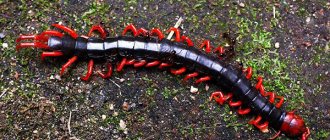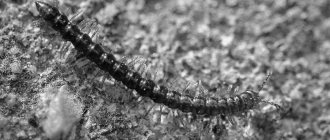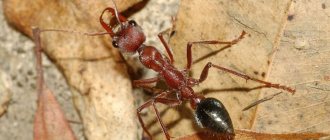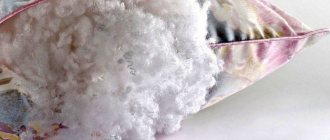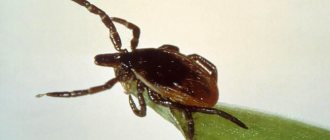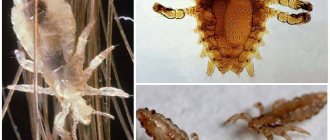A midge bite causes a variety of reactions in people, ranging from a small wound to a tumor that can be the size of a golf ball. A midge is a small insect. They are found on almost every landmass outside of arid deserts and cold zones. There are 2,200 species of midges, 15 of which are extinct.
Divided into two subfamilies: Parasimuliinae contains only one genus and four species. Simuliinae contains everything else. More than 1800 species belong to the genus Simulium.
Most feed on the blood of mammals, including humans; males eat nectar. Usually small, black or gray, with short legs and antennae.
Phlebotominae (sand fly) and Simuliidae (black fly) are carriers of various diseases, such as onchocerciasis (river blindness) .
Saliva contains anticoagulants, a number of enzymes and histamine, and mixes with the blood, preventing clotting. Midge bites cause local tissue damage; if there are many of them, it leads to anemia and large blood loss.
The reaction to stings is allergy or even death, presumably mediated by histamine. In humans, this systemic reaction is known as “black fly fever.” Characterized by headaches, fever, nausea, adenitis, generalized dermatitis, allergic asthma.
About six species of midges feed on people. Other species do not bite. They fly around the head and can crawl into the ears, eyes, nose, mouth, causing extreme irritation.
Black flies, known as midges, are very small and are pests to wild animals, livestock, poultry and humans.
General information and video - how a midge bites
This is a video, at twice the normal speed, of a fly increasing its body weight in 60 seconds. The consequences were a wound on the leg that bled for several minutes.
Even the most powerful repellents cannot save you from this pest, which attacks throughout the day. These tiny flies are incredibly abundant in forested areas during the spring and summer.
Unlike mosquitoes, which insert their proboscis subcutaneously into small capillaries, the fly uses jagged jaws to injure tiny blood vessels.
Only the female black fly feeds on blood, using this rich source of protein to produce up to 800 eggs in its short life.
Males are the gentle sex and feed on nectar from flowers. The female lays eggs on rocks, logs, emergent vegetation, or directly into the water. The eggs hatch and the larvae feed on small plants and animals.
Terrible reddish blisters and swollen legs are the work of the midge.
The wound is enough to be noticed. Although the bite itself contains anesthetics contained in their saliva, the consequences can be quite unpleasant.
The wounds are reddish-purple in color, like blood stains under the skin. These red blisters are accompanied by intense itching that lasts for several days. Swelling is observed, the skin becomes elastic to the touch.
Fortunately, without medical attention, the swelling subsides within a few days. Although, red spots may be visible for up to a week after exposure to these tiny vampires.
The direct damage they cause is the lesser of the evils from these little flies. In several countries in Central, South America and Africa, they carry filarial worms that can live in the human body. They are small tumors under the skin.
Sometimes, filarial worms take up residence in the eyes and lead to vision loss known as river blindness or Robles disease.
What do midges look like?
Midges are small insects that come from the same family as mosquitoes. They are most noticeable in the summer months in the mountains of Scotland, Wales, and other European countries.
They fly in large flocks and gather in clouds. Animals that are bitten include cattle, sheep, deer, but also feed on human blood, leaving a bite mark that swells.
Find out more Ant bites - why they are dangerous, methods of treatment
Pests hate dry weather and are more common in hot, humid conditions. They generally stay away from home, so run indoors if you find yourself under siege.
Getting to know the insect
Midges are small insects whose size barely reaches 5 mm.
Most species have completely miniature sizes - 2 mm. They live everywhere, with the exception of Antarctica. All phases of development, until the insect reaches the imago stage, midges spend in an introductory environment. The family has about 1,800 species; the European temperate climate is inhabited mainly by fruit flies, whiteflies, and sciarids. Only a knowledgeable entomologist can determine the differences between them. The poor fellow, bitten by a midge, has no time to determine the species, and all the vileness looks the same to him. Midges
Interesting!
In most species, only female midges feed on the blood of warm-blooded insects. Males eat exclusively fruit or flower nectar.
People who live near bodies of water or travelers in the taiga and tundra are most aware of how midges bite. As experienced people say, a midge in the taiga will be worse than a mosquito. Hordes of insects are called nothing more than midges. Rivers and lakes with running water are mandatory conditions for the reproduction of insects. Females lay their eggs on plant stems and stones in ponds. Some individuals specifically go underwater to lay offspring. Other females do not bother themselves with diving skills and drop their eggs on the fly. If you take a portion of water from the bottom of a river or any other body of water, using a magnifying glass you can see tiny worm-like white larvae.
The peak of activity begins in mid-April, early May and ends only by the end of June. In the northern regions, midge activity decreases after snowfall. Insects feed only during the daytime in sunny weather. On a rainy, cloudy day, no midge activity was recorded at night. Insects live in flocks containing myriads of individuals. People and animals suffer from midge bites. There are known cases where tens of thousands of cattle died from attacks by the Colombian midge in the Danube countries.
Midges
Review
“One day in late spring, my family and I came to visit relatives living on the banks of the small river Khoper. Suspecting nothing, we decided to get out into nature and relax on the river bank. We drove up to the shore and, inspired by the view of the spring landscape, quickly got out of the car. And then it started! Swarms of small midges swarmed around us and began to bite us furiously, tiny insects getting into our mouths and noses. The child immediately ran into the car, and we adults still tried to resist. But neither running fast nor waving branches helped. I had to leave the inhospitable shore; it’s good that at least no one was allergic to the midge bite. Local residents then laughed at us and said that the midge would disappear only after the flood and the June haymaking.”
Valentina Vladimirovna, Balashov
Midge life cycle and description
Adult black flies are small insects, 1 to 5 mm in length, ranging in color from black to various shades of gray or yellow.
Adults
transition from egg to larva, pupa, adult stage. The full cycle takes two to six weeks, depending on environmental conditions. Adults are most numerous near breeding sites. The average flight distance of a female is 2 km, for males it is less than half this distance.
Eggs
Males and females feed on nectar, but females require blood to mature their eggs. They feed at dawn and dusk. Some species are active during the day.
The number of eggs produced varies depending on the species, up to 450 eggs in one batch and up to seven batches over a lifetime.
Females lay eggs on vegetation just below the surface of the water. Adults live for several weeks in natural conditions.
Larvae
The larvae are worm-shaped, creamy white, approximately 2 to 5 mm long. They need water, air, food. They are not strictly aquatic or terrestrial and cannot develop without moisture. Present in and around salt marshes, swamps, on the banks of streams, ponds, and in dirty substrates. They feed on small organisms.
The larvae do not develop inside humans or other animals.
Some species can produce their first batch of eggs without their first meal (blood).
Simulium slossonae flies four to eight miles from its breeding site in search of food, then returns after feeding to reproduce and lay eggs. Thus, the problem can be transferred over considerable distances.
Mosquito
The mosquito is one of the most common insects, which are classified as blood-sucking insects. Their number is more than 3 thousand species. The favorite places of mosquitoes are places characterized by high levels of humidity, as well as areas where there are stagnant bodies of water.
Such conditions are perfect for female mosquitoes to lay eggs, as well as for the full and unhindered development of their offspring.
Mosquito activity begins in May and lasts until September-October. Since the larvae of these pests are able to tolerate winter cold well, they can easily continue to actively develop and reproduce with the onset of spring.
Male mosquitoes eat plant foods, but females cannot reproduce without blood. Note that this type of insect is a carrier of dangerous infections, including yellow fever and malaria.
Why do they bite?
Only the females bite other animals, causing people to suffer from blisters and painful sores.
They bite because they are born with enough fat and protein to mature enough to lay their first batch of eggs. To grow more eggs, they need more protein and blood to increase their supply.
When bitten, the skin is first punctured, then an anticoagulant is pumped into the wound to stop the blood from clotting. It is the anticoagulant that causes a reaction in people that results in itchy red patches that last for minutes or days.
Sometimes people develop fluid-filled blisters and swelling in response to a midge bite.
Experts' opinion
Based on the results of clinical studies, La-Cri products, including cream for sensitive skin, are recommended by the St. Petersburg branch of the Union of Pediatricians of Russia. The effectiveness, safety and tolerability of the products have been proven by a clinical study. The cream is also suitable for daily skin care of children with mild to moderate forms of atopic dermatitis and during remission, accompanied by a decrease in the quality of life of patients. As a result of therapy, a decrease in the activity of the inflammatory process, a decrease in dryness, itching and flaking was noted.
It has been clinically proven that La Cree cream for sensitive skin reduces itching and irritation, relieves skin redness, moisturizes and gently cares for the skin.
Food preferences
This insect has its own food preferences. Adult females feed on the blood of humans, cattle, horses, sheep, goats, poultry, other domestic animals, wild mammals and birds. Each midge species may prefer one type of host over another.
This is a diurnal biting insect that prefers calm weather. They are not limited to shaded, damp places and do not fly into enclosed spaces.
They find victims at a distance by smell, warmth, and sight. Females swarm around, crawl over the body, preferring the head, hair, ears, as well as any skin that is available.
Find out more Body louse (linen louse) - what it looks like and how to deal with it
Their bites can itch and last for several days. Biting is accompanied by cutting through the skin and feeding on a pool of blood that accumulates on the wound.
Anticoagulants injected at the site of injury can easily provoke a mild or sometimes severe allergic reaction in sensitive people. Their attack is very painful due to the hole that is cut into the skin.
Some people are very attractive to the pest and have strong reactions to their bites. Others do not attract flies and get bitten little, if at all.
Mokretsy
Midges are small mosquitoes, their length reaches no more than 1-4 millimeters. In total, there are approximately 4 thousand species of biting midges, 500 of them live in Russia.
The female lays eggs and offspring on top of leaves and stems that grow from moist soil, sand, in forests, and near the shores of reservoirs (both fresh and salt). Both sexes of insects consume the blood of humans, a warm-blooded animal, as food.
When bitten, a substance with toxic components is injected, which causes the victim to experience severe allergies, pain, itching, and burning.
Medical significance
Like other blood-sucking dipterans, midges are carriers of pathogens that cause diseases in humans and animals.
In Central and South America, West and Central Africa, and on some Caribbean islands, biting midges are carriers of threadworms of the genus Mansonella. These parasites cause dermatitis and skin lesions in humans.
The biting midge, species Culicoides sonorensis, is responsible for transmission of blue tongue virus to sheep and cattle. Bluetongue is a serious disease of ruminants. Blue tongue viruses are found all over the world, in different regions.
Black midges play a central role in the transmission of the parasitic nematode Onchocerca volvulus, which causes onchocerciasis or "river blindness." They serve as a host for the nematode and act as a carrier and distributor of the disease. The parasite lives on human skin and is transmitted during feeding.
Midges are sometimes incorrectly called sand flies. Sand flies belong to a different biological group.
Insects do not appear in houses, apartments, inside people or animals.
Causes of biting midges
Biting midges can easily live in a waste bin, among unwashed dishes, or in dirty pet cages. A few insects that have settled in an apartment can lay the foundation for an entire colony of midges that happily settles next to people.
Uninvited guests can also be brought into the house from the street - on clothes, animal hair, fruit from the store. As a rule, this is how insect eggs enter a person’s home, and some time later they successfully turn into adults.
Midges can end up in an apartment by entering through open ventilation hatches or sewers. Thus, unsanitary conditions and the lack of barriers to entry into the home become the reasons for the appearance of biting pests in human housing.
Symptoms of a midge bite
Insects attack so quickly that the skin receptors do not have time to eliminate the irritation. Upon contact with the surface of the skin, midges instantly gnaw on part of the surface layers, lubricating the wound with saliva (the main difference from mosquitoes).
Saliva acts as an anesthetic and allows insects to remain undetected. If the moment of the bite is not felt, the fly sucks blood and lymph from the surface of the wound, which is necessary for the life cycle and reproduction.
The basis of the body's reaction to midge bites is:
- tachycardia (rapid heartbeat);
- hypotension (low blood pressure);
- hyperthermia (fever);
- enlarged lymph nodes.
Signs:
- redness;
- soreness;
- burning;
- itching;
- edema;
- rash;
- blisters or papules.
In addition, the midge bite differs from other blood-sucking ones in that there is a small wound in the center. It is subjected to intense scratching, which increases the area, causing inflammation and secondary infection.
The central symptom indicating an allergic reaction is severe itching that is difficult to relieve. The more you scratch, the stronger the skin damage appears - swelling, rash.
Large numbers of bites can cause "black fly fever" with headache, nausea, fever, swollen lymph nodes, and aching joints. Less common, severe allergic reactions require hospitalization.
Traditional treatments (drugs)
Drug treatment follows the same plan as treatment with traditional methods: we disinfect, relieve itching, prevent swelling from spreading, and fight allergy symptoms.
- For disinfection, you can use solutions of Chlorhexidine or Furacilin ;
- Levomekol, Lincomycin ointment will help relieve the symptoms of an allergic reaction, as well as itching, pain and swelling . You can also use antihistamines in the form of tablets ( Suprastin ), their effect will be longer, but will not act as quickly as ointment;
- To relieve itching, cooling solutions are used, for example, Menovazin ;
- for the last stage of treatment, when there is no itching, the rash and swelling have gone, you can use healing ointments ( Argosulfan, Levomekol ).
If suppuration appears at the site of the bite, surgery may be required. The doctor will mechanically open the abscess and remove the accumulated pus.
What to do to treat a midge bite?
Very often, bite marks bother you for a long time (2-3 weeks).
- Wash your skin with clean cold water, preferably plain soap;
- Dry with blotting movements. Don't rub;
- Press the injury site with your fingers and squeeze out any remaining insect saliva;
- Treat with an antiseptic solution (furacilin, chlorhexidine, dekasan);
- Take an anesthetic and antiallergic drug (paracetamol, imet, diazolin, claritin).
- Ointments and gels for wound healing (methyluracil, actovegin, solcoseryl, bepanten, panthenol, cinnit cream).
Never scratch bite marks. Seek help from a doctor if symptoms bother you.
Folk recipes
At home, traditional medicine recipes can be used to relieve swelling after a midge bite, eliminate itching and prevent infection of wounds:
- Baking soda and vinegar have worked well as a means to relieve swelling. To do this, you need to prepare a soda solution, moisten a gauze bandage with it and apply it to the affected skin. Soda paste will help eliminate swelling in a few hours. To prepare it, soda must be mixed with water to the consistency of a thick paste. Apply the resulting substance periodically to damaged skin.
- Laundry soap is a universal remedy for redness, swelling and itching. Soap foam is applied to the swollen area and washed off after drying.
- If there are no medications at home, swelling can be eliminated using any product containing menthol. In critical situations, the use of toothpastes and mouth rinses is allowed.
- Cold compresses are suitable to relieve itching and swelling after bites. Frozen meat, ice cubes, cold water, in short, everything you can find in the refrigerator is applied to the swollen areas.
Folk remedies for midge bites - In nature, you can provide emergency assistance to yourself or your child using a plantain leaf. Apply the pre-washed sheet to the affected area and attach it with a bandage. Dandelion leaf also has the effect of eliminating swelling.
- You can eliminate the discomfort after a midge bite using potatoes. To do this, apply a cut of a peeled tuber, juice or grated potato to the damaged skin.
- Applications of boric alcohol or an aqueous solution of boric acid will relieve itching and have an antiseptic effect.
- Onions are a recognized folk remedy for relieving pain and reducing swelling after a housefly bite. The onion should be chopped, wrapped in gauze and applied to the bite site.
First aid for midge bites
If it so happens that you were bitten by a midge near your home, try to reduce the consequences:
- The first thing to do is disinfect (chlorhexidine, miramistin).
- Apply pressure to the injury site to remove any residual venom from the wound. It is advisable to repeat this procedure several times.
- Next, rinse with plenty of water to remove any remaining toxic saliva.
- Blot with a napkin to remove excess water. But don't rub this area.
The next question is how to remove the tumor. To eliminate swelling, you need to apply ice to the swollen area, treat it with an antiseptic, and take antihistamines and painkillers.
If the itching is severe or does not stop for a long time, you need to take antihistamines (Suprastin, Ketotifen, Cetrin, Claritin, Zodak, Zyrtec, loratadine, cyterizine), even if you have never had an allergy before. This precaution will reduce the size of the tumor after or prevent its occurrence.
Find out more Midges in the kitchen - how to get rid of them, 20 simple ways
For severe swelling, use hormonal ointments, for example, hydrocortisone. They have an anti-inflammatory effect.
After providing first aid, monitor the condition and wound. If symptoms of a severe allergic reaction occur, consult a doctor.
Eye damage
An unpleasant feature of a midge bite is that, given the small size of the insect, it can penetrate the ears, nasal cavity, and often bites the lip or eye. The latter cases are especially dangerous to health - if not treated correctly, damage to the eye membranes can lead to loss of vision. Therefore, it is necessary to contact a specialized doctor (ophthalmologist), who will prescribe the necessary medications. Pre-medical first aid measures consist of the following actions.
- Rinse eyes with running cold water.
- How to relieve swelling if a midge has bitten your eye? It is necessary to lubricate the eyelids with ointment against allergic manifestations (Hydrocortisone, Fenistil Gel), avoiding getting it into the eyes.
- Apply a cold compress.
What to do if a child is bitten by a midge and his eye is swollen? If the bite is in the eye area - eyelid, eyebrow, cheekbone, then the bite is treated in the same way as in other cases: washed, cooled, disinfected and lubricated with anti-inflammatory cream.
Allergy to midge bite
There is a pattern - the more painful the bite, the stronger the reaction to it. The severity of the reactions depends on several factors:
- Type of midges and number of bites;
- The immune status of the body, the age of the person;
- Tendency to allergic reactions;
- Individual intolerance to the components of midge saliva;
- Infection of bite wounds by scratching the infection.
The nature of manifestations, duration, outcome depend on the combination of symptoms. The most critical consequence is the development of anaphylactic shock, which requires immediate resuscitation. But, fortunately, this rarely happens.
How to get rid
Controlling midges is difficult due to the sheer number of potential breeding sites. However, it is possible to get rid of these insects by treating their areas with a natural product, Bacillus Thuringiensis israeliensis (Bti).
Breeding sites are treated with chemical pesticides to control the population. The products are similar to those used to eliminate mosquitoes and their larvae from aquatic habitats. Repellents should be used during the day when the midges are actively feeding.
Like all insects, they do not like rich odors. Apply strong scents around or on yourself, such as perfume, antiperspirants, clove oil, lavender oil, peppermint oil.
Peppermint is an excellent remedy for preventing midge bites and treating their consequences.
Since insects are attracted to dark clothing and wet ground, wearing white clothing and being in a well-lit, dry area will prevent encounters with them.
Cover all parts of the body as much as possible: arms, legs, head.
They are attracted to the carbon dioxide of your breath 200 meters away, so the activity of heavy breathing attracts insects.
To protect your home, you need to use mosquito nets, air circulation devices (fans), mosquito coils, and lamps. Most midges can pass through a 16 mesh insect screen, so a smaller mesh size is required.
The midge is small and can get into a closed room by becoming entangled in hair. However, they prefer to bite outside the home.
Prevention at home
The basis for protection against midges in the house are mosquito nets and fumigators. Attention! Remember that a mosquito net increases the risk of a child falling from a window, as it creates the illusion of a barrier - use window blockers.
Fumigators can work on plates or liquid, slowly spraying a substance toxic to insects around them. The substance most often used in fumigators is ethok (also known as prallethrin).
A common question for pediatricians is “my child found and chewed a fumigator plate, what does this mean for him?” The fumigator plate contains about 9 mg of prallethrin. The oral toxic dose of prallethrin for humans is 600 mg/kg (LD50). Thus, neither eating these plates nor inhaling fumes from a fumigator can usually cause serious harm to a child, but getting repellents and chemicals for fumigators into the mouth and mucous membranes should still be avoided.
You can read more about the use of repellents and fumigators on the Rospotrebnadzor website.
